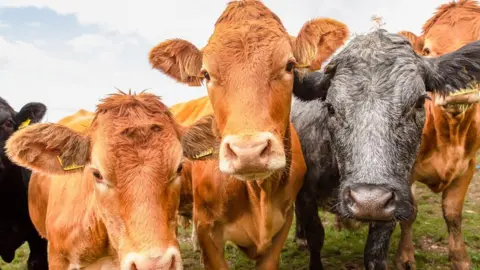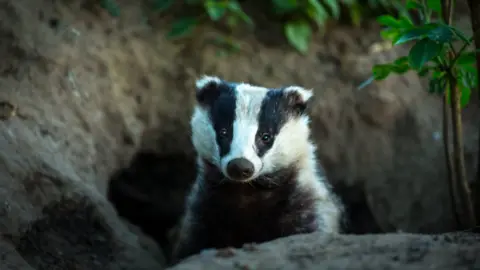Bovine tuberculosis study finds cattle-to-cattle transmission 'most common'
 Anne Coatesy
Anne CoatesyCattle-to-cattle transmission of bovine tuberculosis (bTB) is "considerably more common" than badger-to-cattle transmission, a new study has found.
The research by the Agri-Food & Biosciences Institute (AFBI) analysed the genetic data of the bacterium that causes bTB.
It follows a five-year Test, Vaccinate or Remove (TVR) project in County Down which included selective badger culls.
The AFBI study generated 162 gigabytes of genetic data.
It reveals patterns of bTB transmission within and between cattle and badger populations in the TVR zone near Banbridge.
It found cattle-to-cattle transmission was "by far" the most common form of disease spread observed, while badger-to-badger transmission was undetected.
Scientists detected transmission from cattle to badgers and vice versa, but found cattle-to-badger transmission "appeared to be considerably more common than badger-to-cattle transmission", although highly variable.
 Getty Images
Getty ImagesAFBI said: "The sum of the evidence suggests that cattle were playing the major role in the spread of disease in the TVR zone, with badgers involved, but to a lesser extent."
But it added that where badger-to-cattle transmission occurs, it can amplify within a herd "to have a much greater impact" and "it remains plausible that a trickle of infection from badgers to cattle could still have an outsized effect".
The scientists said the use of genomics for disease surveillance, used widely during the Covid pandemic, was "likely to be of increasing importance for bTB control in the future".
A strategy to tackle Bovine TB in Northern Ireland was announced by the then-agriculture minister Edwin Poots in March 2022.
It included a proposal for a badger cull, which is being challenged in the courts.
